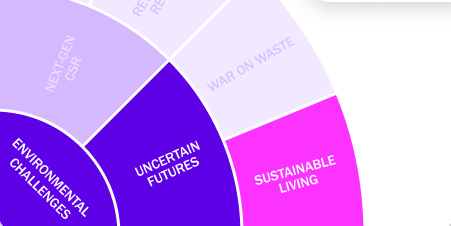
Consumer brands today cannot simply react to culture, they must create it. But how can they know what to do for their future consumer when they can’t speak to them yet?
In a perma-crisis world, growth is a huge pressure point for global consumer brands. For many industries, from FMCG to retail or travel to automotive this means being able to predict consumer needs several years into the future to meet challenges including lengthy product development cycles, disruption to supply chains, increased competition for consumer attention and capital investment decisions.
It is also becoming harder for larger, established incumbents to sustain a leadership position, partly because there are so many new players and models entering the market, and partly because they struggle to gather the relevant insights to enable them to pivot and be bold.
The future of business foresight lies in a unique collaboration between human and machine – and this is where AI can play a vital role.
Human x machine = foresight
As the world moves towards Industry 5.0, we’re becoming more conscious of the benefits of human and machine collaboration. Not only can it help to identify real commercial opportunities and improve offerings for consumers, but it also provides employees with the opportunity to focus on their strengths in their role and deliver value that only humans are capable of.
Amazon Robotics has been providing great examples of this for the past decade: while people in the warehouse focus on work that requires human intelligence, Amazon’s robots move heavy crates from A to B and complete menial tasks that support the human staff in various ways.
But as we’ve seen in ongoing warnings against bias in AI data sets, AI is only as good as the data it is fed and the people who use it. While AI has some huge benefits, like being able to crunch through large data sets in seconds, it only mimics intelligence – without the actual intelligence or creativity of a human. Without enough human input in the mix, all AI can do is learn from what’s gone before and repeat it in different ways, laying the groundwork for blandness, bias, or – in the case of business foresight – some seriously inaccurate predictions.
That’s why I believe the best applications of AI are those that require human input and guidance. I want to deliver an antidote to the insights industry via ‘simple complexity,’ combining human expertise with a unique approach to AI and ML data-crunching to help businesses get to the heart of what matters. For us at Foresight Factory, that means focusing our team on analysis of our proprietary data to identify key consumer trends, while AI crunches through commercial data sources (such as new product launches and campaigns), and machine learning is applied to match the two to identify relevant opportunities and risks to the business.
Decisions in the data
By combining human intelligence with AI’s best attributes, we can help global brands to shape and anticipate their future and identify ‘white space’ opportunities and risks to the business – building resilience, and futureproofing business strategy.
Of course, data is the star here. Because we’re in the business of objectivity, not only does data need to be free from bias, but also the ways in which it’s processed. By combining ‘live’ data sources, such as social media and press releases, with years of deep trends and survey data, we’re able to start building a clear and unvarnished picture of the future for consumer businesses around the world. Without the breadth and robustness of a variety of these data sets, AI simply wouldn’t have what it needs to deliver the right answers. We’re constantly testing and reviewing new commercial data sources to keep outputs accurate.
The issue of bias in AI data will probably never go away completely, because sources are created by humans and humans are inherently biased. But what we can do, in the market research industry at least, is to make sure we avoid interpretation bias at all costs. Our mission is to combine human insight with AI and ML processing to understand objectively what is happening in the world – and what’s coming.
When businesses are able to identify movements that could change or disrupt consumer behaviour, they can deeply understand and react to the needs, attitudes and behaviours of their future customers, and act accordingly. This has been made eminently more achievable by AI and machine learning technology.




